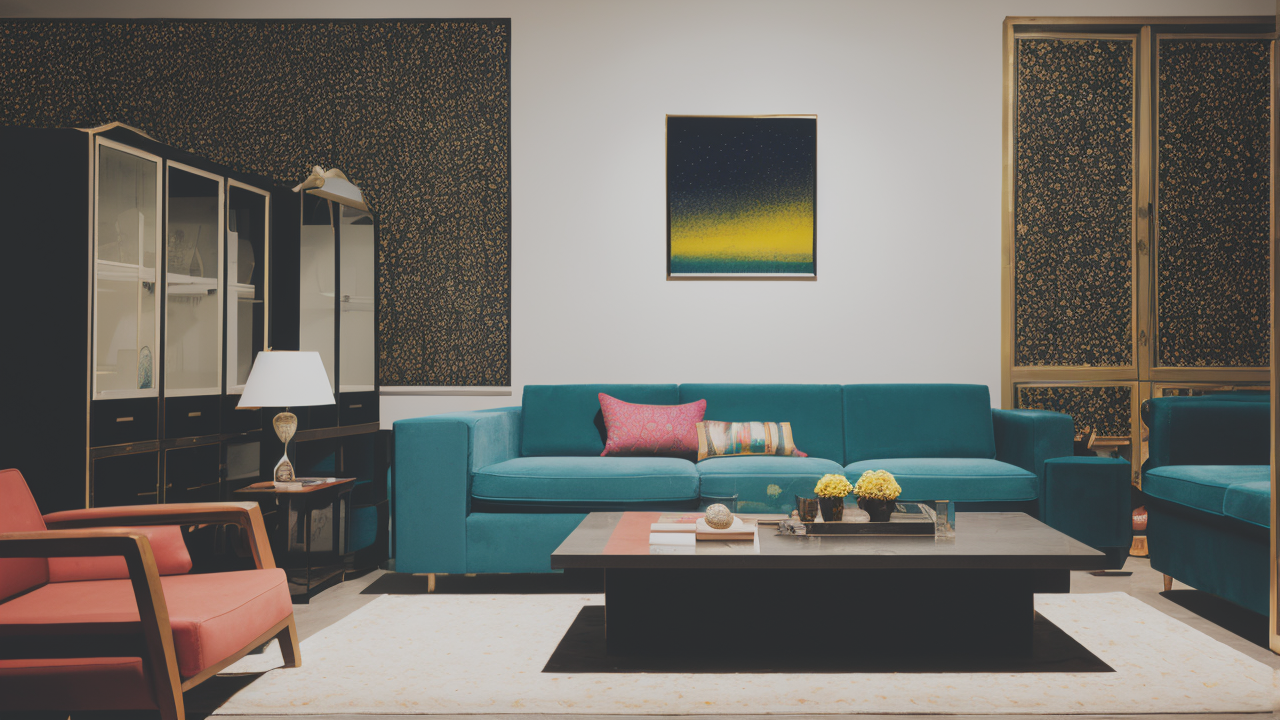
The Art of Fusion: Merging Pop Arte and Nawabi Aesthetics in Home Decor
Understanding the Intersection of Pop Art and Nawabi Design
The Historical Significance of Nawabi Aesthetics
Nawabi aesthetics have roots in the Mughal era of India. They are known for their opulence and grandeur.

Key features include intricate patterns, rich colors, and luxurious materials. Gold and silver accents are common.
Nawabi design often features floral motifs, calligraphy, and geometric patterns. These elements create a sense of
royalty and elegance. The style reflects the wealth and power of the Nawabs, who were regional rulers. Today,
Nawabi aesthetics continue to influence modern design, especially in South Asia.
The Rise of Pop Art in Modern Home Decor
Pop art emerged in the 1950s and 1960s as a bold, new artistic movement. It challenged traditional art forms
by using everyday objects and popular culture. In home decor, pop art brings vibrant colors and playful designs.
It often features iconic images, bold typography, and comic book-inspired elements. Pop art decor is about
making a statement and adding personality to spaces. It's popular for its ability to create focal points and
inject fun into interiors. The style continues to evolve, influencing contemporary design trends.
Key Elements of Nawabi Art and Their Contemporary Counterparts
Nawabi art elements have modern counterparts that blend well with pop art:
- Intricate Patterns:
- Traditional: Detailed floral and geometric designs
- Contemporary: Abstract patterns or simplified geometric shapes
- Rich Colors:
- Traditional: Deep reds, blues, and golds
- Contemporary: Bold, saturated hues or neon colors
- Luxurious Materials:
- Traditional: Silk, velvet, and precious metals
- Contemporary: High-gloss finishes, metallic accents
- Ornate Furnishings:
- Traditional: Carved wooden furniture, plush cushions
- Contemporary: Sleek, sculptural pieces with bold shapes
- Calligraphy:
- Traditional: Arabic or Persian script
- Contemporary: Typography-based art or neon signs
These elements can be reimagined to create a unique fusion of Nawabi and pop art styles in modern homes.
Strategies for Incorporating Pop Arte into Nawabi Decor
Leveraging Pop Arte for Visual Impact
Pop arte can add a dynamic twist to Nawabi-inspired spaces. Use bold colors to create striking contrasts.

Introduce pop art prints or sculptures as statement pieces. Consider oversized pop art canvases to complement
ornate Nawabi furniture. Mix in graphic patterns that echo traditional Nawabi motifs but with a modern twist.
Use neon lighting to highlight Nawabi architectural features. Incorporate pop-inspired furniture shapes
with traditional Nawabi textiles. The key is to create a balance that respects both styles while creating
a unique visual impact.
Balancing Traditional and Contemporary Elements
Achieving harmony between Nawabi and pop arte requires careful balance:
- Color Palette: Combine rich Nawabi hues with pop art's bright tones
- Textures: Mix luxurious Nawabi fabrics with sleek, modern surfaces
- Patterns: Blend intricate Nawabi designs with bold pop art graphics
- Furniture: Pair ornate Nawabi pieces with streamlined pop-inspired items
- Accessories: Use pop art objects to accent traditional Nawabi decor
The goal is to create a cohesive look that honors both styles. Let each element complement the other
without overwhelming the space. This balance creates a unique, personalized aesthetic.
Case Studies: Successful Fusion Projects
- Mumbai Apartment:
- Nawabi-inspired carved wood panels with pop art murals
- Traditional chandeliers paired with neon light installations
- New York Loft:
- Nawabi textiles on modern furniture shapes
- Pop art prints framed in ornate, Nawabi-style frames
- London Boutique Hotel:
- Nawabi-patterned wallpaper with pop art color blocking
- Classic Nawabi furniture updated with pop art upholstery
These projects show how Nawabi and pop arte can create stunning, unique interiors. They demonstrate
the potential for innovation in fusion design.
Best Practices for Pop Arte Decor in the United States Market
Adapting Pop Arte to American Lifestyle and Spaces
To succeed in the U.S. market, pop arte decor should align with American lifestyles:

- Functionality: Ensure decorative elements don't compromise usability
- Scale: Adapt to various home sizes, from apartments to suburban houses
- Versatility: Create pieces that work in open-plan living spaces
- Maintenance: Design for easy cleaning and upkeep
- Customization: Offer options to personalize designs
Consider American design preferences like clean lines and open spaces. Blend pop arte with familiar
elements to make it more accessible. Focus on creating statement pieces that can anchor a room without
overwhelming it. This approach helps pop arte fit seamlessly into American homes.
The Role of Authenticity in Fusion Decor
Authenticity is crucial in fusion decor, especially when blending cultural styles:
- Respect Cultural Origins: Understand and honor the heritage of both styles
- Avoid Stereotypes: Steer clear of clichéd representations
- Educate Consumers: Provide context about the artistic elements used
- Collaborate with Artists: Work with creators from both pop art and Nawabi traditions
- Source Ethically: Use authentic materials and support artisans when possible
Authentic fusion decor tells a story and creates meaningful connections. It goes beyond surface-level
aesthetics to create truly unique and respectful designs. This approach resonates with consumers who
value cultural appreciation and artistic integrity.
Future Trends in Pop Arte Home Decor
Looking ahead, pop arte home decor is likely to evolve in exciting ways:
- Digital Integration: Incorporating interactive and digital elements into decor
- Sustainability: Using eco-friendly materials and upcycled pop culture items
- Minimalist Pop: Blending pop art with minimalist design for subtle impact
- Cultural Fusion: Expanding to include more diverse cultural influences
- Personalization: Offering custom pop arte pieces based on individual interests
The future of pop arte decor lies in innovation and personalization. It will continue to push boundaries
while adapting to changing consumer preferences. As it evolves, pop arte will likely become more
integrated with technology and sustainability trends, opening new possibilities for creative expression
in home decor.


